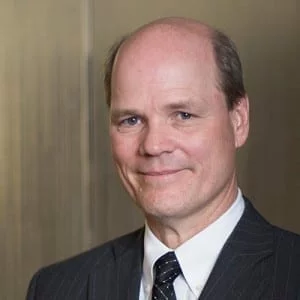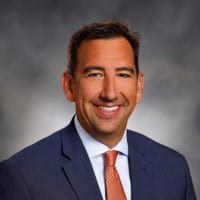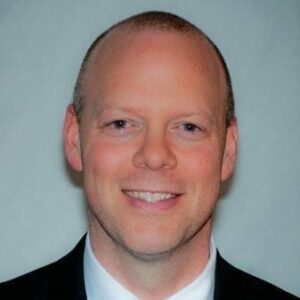
Establishing a strong culture has always been a priority for healthcare IT leaders, and for good reason. But as expectations continue to mount and the available talent pool continues to shrink, it is becoming even more paramount for CIOs to create an environment that can attract and retain the highest-quality individuals. That, according to Reid Stephan, means “ensuring they have the tools and resources they need, they feel safe in their work, they have permission to make decisions, and are recognized and rewarded for the work they’re doing,” he said an interview with Bill Russell, Founder of This Week Health.
The question is how to make this happen. And while there isn’t a precise formula that can be plugged into any setting, there are best practices that can be applied to help create solid teams and build leaders.
Below, we’ve assembled insights from recent interviews with four influential leaders on how they were able to break through challenges and develop a foundation for success.
Developing and maintaining a solid culture within IT can be challenging, particularly with a system like HCA, which includes 184 hospitals and approximately 2,000 sites of care. But if it’s approached the right way – by ensuring the mission is ingrained into every decision – it can be surprisingly “easy,” according to former CIO Marty Paslick.
“It starts with the roots,” he said during a 2023 interview. “We’re a company founded by physicians who wanted a better way to execute health care. Our mission statement is paramount.”

Marty Paslick, Former CIO, HCA Healthcare
But what makes it possible to carry out the promise delivered in the statement – “We are committed to the care and improvement of human life” – is leadership’s dedication to sustaining a healthy culture. According to Paslick, who retired in April after nearly 40 years with HCA, the IT department has notched some of the highest employee engagement scores in the company. The secret? Being “active listeners,” which means embracing all types of feedback. “No matter how high the scores are, and how proud you are personally of your organization, you’re going to get constructive criticism,” he said. “But if we want the culture that helps us produce results, we have to listen and we have to react. We have to put into action plans that address those things. And I think we've done that fairly consistently.”
Another focus was interacting with the IT team, which became significantly more difficult when remote and hybrid models were introduced during the pandemic. Paslick’s answer was to create “virtual hallways,” a weekly 30-minute segment during which participants can “chat about projects and ask each other questions,” he said.
The only rules? No PowerPoint slides and no prepared questions, which was met with resistance at first. “People were intimidated,” Paslick recalled. However, once they saw the positive impact of having impromptu conversations, it became a valuable tool. “We got to a place where people would walk in, grab a donut, and say, ‘what’s on your mind, Marty?’ I’d ask them questions and we’d have a dialogue, just like we would’ve had if we had bumped into each other in the hallway.”
It created a camaraderie that has been a game changer for HCA, he added, and a belief that “we’re all in this together.”
Like many others in today’s dynamic healthcare industry, Susan Ibanez has held leadership roles with multiple organizations. But while the CIO position has similarities from one system to the next, the culture and the people who comprise it are always distinctive. As a result, she has made it a point to start each new role with a “listening tour” to help get to know the team and understand their professional and personal goals, she said during a Townhall interview with Karla Arzola, CIO at Rocky Mountain Human Services.

Susan Ibanez, CIO, Southeast Georgia Health System
“It’s a great opportunity if you’re new to the organization to have one-on-one meetings with your team members to get to know what’s important to them. As the leader, you can help support those goals,” said Ibanez, who came to Southeast Georgia Health System in July 2023, having previously served in leadership roles at Vail Health, Memorial Hermann, and Driscoll Children’s Hospital. And although doing so can help boost engagement, it’s also critical to the development of individuals. “We’re building leaders,” she noted. “Our overall goal is for them to be successful, whether it’s within our organization or outside of it. Getting your head around that is important.”
The other critical benefit of engaging in open dialogues with team members is that it can help identify roadblocks and inform more effective strategies. “People are very eager to share,” especially when it comes to workflows and procedures, said Ibanez, who holds a doctorate in Healthcare Administration. “What we’re looking for is, what are your pain points? What works well about technology in our organization? What would you change about technology? What is your barrier from a technological perspective or an IT leadership perspective?”
By inviting those conversations, CIOs can glean valuable insights into what’s working and, more importantly, what isn’t working, and marry that with the information received from other leaders, Ibanez added. “It helps you build the plan that’s going to be your roadmap.”
For Corewell Health CIO Jason Joseph, perhaps the most important lesson he has learned isn’t how to build a successful team, but rather, how not to do it. “Teams don’t get created by being told they’re a team, and they don’t get created because you put one leader in charge,” he said during a Keynote interview. Instead, “teams get created when you have them walk through fire together; when you give them a project and they have to rely on each other and go do it.”

Jason Joseph, Chief Digital & Information Officer, Corewell Health
The ‘fire,’ in this case, refers to the “very aggressive plan” to create a standardized platform across Corewell, which was formed as the result of a 2022 merger between Beaumont Health and Spectrum Health. And it’s not just the Epic environment – several other systems are being modernized, which makes for a significant lift considering the size and scope of Corewell (21 hospitals and more than 300 ambulatory sites).
Pulling it off requires strong teams, as well as alignment across the organization. Without both of those in place, “you’re going to be fighting with one hand tied behind your back for the foreseeable future,” Joseph said. And while some organizations choose to divide and conquer, having one team supporting the old technology and another focused on the new implementation, it doesn’t always result in harmony. In fact, it can end up “fragmenting and splintering your team even more.”
To avoid that scenario, Corewell went through a “deliberate” restructuring to form a single team with a single mission. “They started to rely on each other,” Joseph said, noting that Corewell saw a subsequent boost in employee engagement scores. “That never would have happened if we didn’t have teams aligned right up front.”
More importantly, it drove home an important point about the power of unity. “A big part of it is getting your team aligned to say, ‘we’re on the same journey. We’re going to do it together, and we’re going to do it with integrity,’” he said. “When you get those things in line, all the other stuff starts to work itself out.”
When starting a new role, it’s only natural for leaders to want to dig right in and start tackling the biggest strategic needs, but that shouldn’t be the first priority, according to Reid Stephan, CIO at St. Luke’s Health in Boise, Idaho. Instead, the focus should be on assessing the culture and ensuring the right people are in the right seats. Surprisingly, “a lot of leaders are reluctant to address that,” Stephan noted during a 2021 interview. “They’d much rather figure out their disaster recovery strategy. I have smart people who will do that in spades all day long if I surround them with the right team and the right structure to get the best out of them.”

Reid Stephan, VP & CIO, St. Luke's Health System
And if individuals aren’t in roles that can most effectively leverage their skill sets, leaders must be willing to do some shuffling, even if it’s met with resistance. “Those conversations can be grueling,” but they’re critical in helping to determine culture fit, something Stephan holds with high regard. “Certainly you have to have aptitude, but if you don’t have some of those core foundational personality pieces in place, it makes everything else so much harder,” he added. “The technical skills are much easier to grow and develop.”
Culture, on the other hand, requires constant care and feeding, and it starts with listening. “Spend some time sitting and observing,” Stephan advised. “Watch how they’re using solutions. Be curious. Ask questions.” But don’t do it in a way that can cause people to become defensive, he said, suggesting a different approach. “Try saying, ‘I noticed you doing this. What’s the reason you do it that way, or what’s good about that?’ That’s a concept that has resonated powerfully in our department.”
By soliciting this input, leaders can draw valuable insights into “whether the culture is trickling down to the degree that you want, or if there are gaps,” Stephan said. And if there are, those insights can help point teams in the right direction.
At the end of the day, “I work for these 450 people in my department,” he concluded. And the best way to serve those constituents is by ensuring they feel supported. “That’s really the role of the person at the top – to make sure all those teams are high-functioning teams, and that means having the right culture, the right leadership, and the right framework for getting work accomplished.”